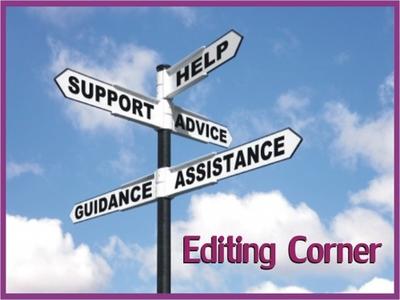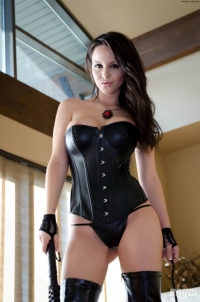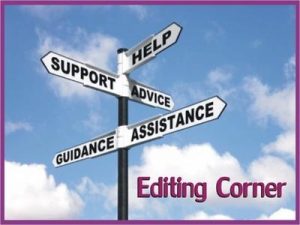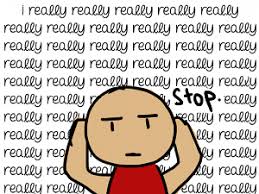When I sit down to write, I have pictures in my mind. I can see my setting, whether it is an exotic foreign temple, a seedy motel, or a trendy night club. I have some sense of my characters’ physical appearance. I imagine the action as it occurs, playing out like a movie in my mind. Most authors, I believe, have similar mental images.
Part of our task as writers is to communicate all these pictures to our readers. Description is essential in building a fictional world for our readers to inhabit. Description of the setting helps to establish a mood for the story as well as conveying factual information in order to set the scene. Description of a character allows readers to understand who the character is, why he or she reacts in particular ways or evokes desire, hate or fear from other characters. Effective description of action is essential in order to move the story forward along its plot arc.
Some authors might disagree, but I would argue that it’s nearly impossible to write a good story without some description. How much, though, is enough?
A common weakness in the work of novice writers is over-description. A story will begin with four paragraphs of text about the weather, the manor house, or the windswept Scottish moors. A character cannot show up on a page without having some adjectives or adverbs to drag around. A love scene explains in excruciating detail what the hero’s left hand and right hand are doing at each moment.
Why is this a problem? Because too much description can interfere with the progress of the story. Consider the following passage, adapted from a very early story of my own called “The Ambassadors to G79-3”.
She emerged first from stasis, a faint humming in her ears, a strange saltiness in her mouth and a sharp tingling in her secret parts remarkably like sexual excitement. Her eyes gradually focused on the luminous neon scope attached to the curved inner surface of her personal stasis chamber. The temporal-spatial coordinates displayed there were reassuringly familiar. The ship was right on course and the stasis mechanisms had functioned perfectly, awakening her a mere six hours from the destination.
She stretched her long limbs luxuriously, enjoying the soft, gentle pressure of the cushioning foam that lined the chamber. Lyrene fumbled a bit with the mechanical release latch, then swung the port wide and stepped clumsily into the cylindrical control room that formed the heart of their ship. Blue, green and gold lights blinked and flashed as the ship’s advanced biocerebral core rapidly calculated alternative landing trajectories and touch-down coordinates. The viewing dome in the middle of the floor glowed golden from the raging fires of the star G-79. Lyrene deftly flicked a switch, executing an 180 degree turn, and the dome revealed an endless field of deep blue spattered with flecks of silver, and a greenish egg shape hanging near the edge.
This is the start of the story. As any experienced writer will tell you, the first few paragraphs of a story or novel are critical. This is where you must “hook” readers, catch their interest, excite their curiosity, make them want to read on so that they can find out what happens next. In this case, though, I am two hundred words into the tale, and nothing has really happened. If I continue in this vein, I’m going to lose my readers’ attention.
Clearly, I need to set the scene. If I don’t manage to communicate the fact that this is a space ship, then the next paragraphs will not make any sense. However, I can streamline the entire opening, simply by cutting some the adjectives and adverbs, restructuring a few sentences, and omitting details that really are not important.
She emerged first from stasis, a humming in her ears, a saltiness in her mouth and a tingling like sexual excitement in her secret parts. The luminous scope inside her stasis chamber showed temporal-spatial coordinates that were reassuringly familiar. The ship was right on course. The stasis mechanisms had functioned perfectly, awakening her six hours before the scheduled landing.
Lyrene stretched her limbs, stiff after months of immobility, then crawled clumsily through the stasis chamber port into the cylindrical control room. Lights blinked and flashed as the ship’s brain calculated landing trajectories and touch-down coordinates. She requested an 180 degree turn. Instead of the fires of the star G-79, the viewing dome now revealed a field of deep blue spattered with flecks of silver, with a greenish egg shape hanging near the edge.
I have cut the passage by more than seventy five words. More importantly, I have focused the reader’s attention on Lyrene and her actions, instead of on what the ship looks like. One technique for doing this is to remove references to intermediate acts unless they are essential for understanding the scene. In the revised version, I dropped any mention of unfastening the latch or opening the port. Notice, however, that I did not remove the adverb “clumsily”. I felt that this was necessary to convey Lyrene’s physical state after the long space trip.
The passage above is hardly a model for great literature. However, it does set the scene better than the previous example, without holding up the story.
Another hazard in the realm of descriptions is over-describing your characters. Of course you want your readers to be able to visualize your hero and heroine. Leave some space, though, for the reader’s imagination. Sketch your character, highlight the critical aspects of their appearance or personality, but then let the reader’s personal preferences fill in the details.
Here’s another example, once again adapted from some of my unpublished work.
Why did she arouse me so strongly? She didn’t look the least bit tarty. Her beige skirt ended a modest distance below her knees. Her white crepe blouse draped her torso, suggesting rather than revealing the roundness underneath. The V of the neckline exposed the hollow of her throat, where I caught the discrete sparkle of some silvery charm. She had arranged her hair, a warm brown threaded with hints of red, into a neat chignon at the base of her neck. She was probably wearing make up, but it was subtle enough that it merely enhanced the overall impression: a beautiful, business-like young woman with a smile I might be willing to die for.
How tall is this woman? What color are her eyes? How old is she? Is she Caucasian or some other ethnicity? Is she slender or voluptuous? What size bra cup does she wear? Forgive me for the last question, but I have read far too many beginner’s stories where the author apparently viewed this this item of information as essential. ;^)
Each of you, reading this paragraph, will have a somewhat different image of the woman being described. I have not provided any of the above details of her appearance, because they are not important to the story. What is important is the narrator’s impression: that she’s “neat”, “business-like”, “discrete”, “subtle”, “modest”. (As it turns out, this character is not at all what she seems, but rather is a sexually ravenous dominant.)
Lawrence Schimmel, the celebrated gay author, has compared writing to creating a radio play. In the days of radio, the entire family would sit around the “wireless”, listening to comedies or dramas. The voices would evoke different pictures for each listener. The playwright’s job was to suggest, to hint, to guide the imagination.
I don’t have space in this article to consider the question of over-description in action, which can also be a problem. However, I would like to leave you with a few suggestions for improving your descriptions.
1. Make each adjective and adverb count. Some writing gurus advise eliminating all adverbs and most adjectives. I think this is just plain silly. However, before you write about a “blue chair”, consider whether the blueness really matters for your story. Be selective.
2. Avoid starting a story with pure description. There’s a risk that you’ll lose your readers’ attention before you get to the action.
3. Keep the focus on the characters and the events of the plot. Interleave description with action.
4. When in doubt, cut. Don’t hold on to descriptive passages just because they paint a beautiful picture.
In writing, despite what some people may say, there are no hard and fast rules. You need to discover what works for you. Personally, I’ve found that applying the suggestions above help me turn overblown, wordy descriptions into more effective passages that support rather than interfere with the action.













